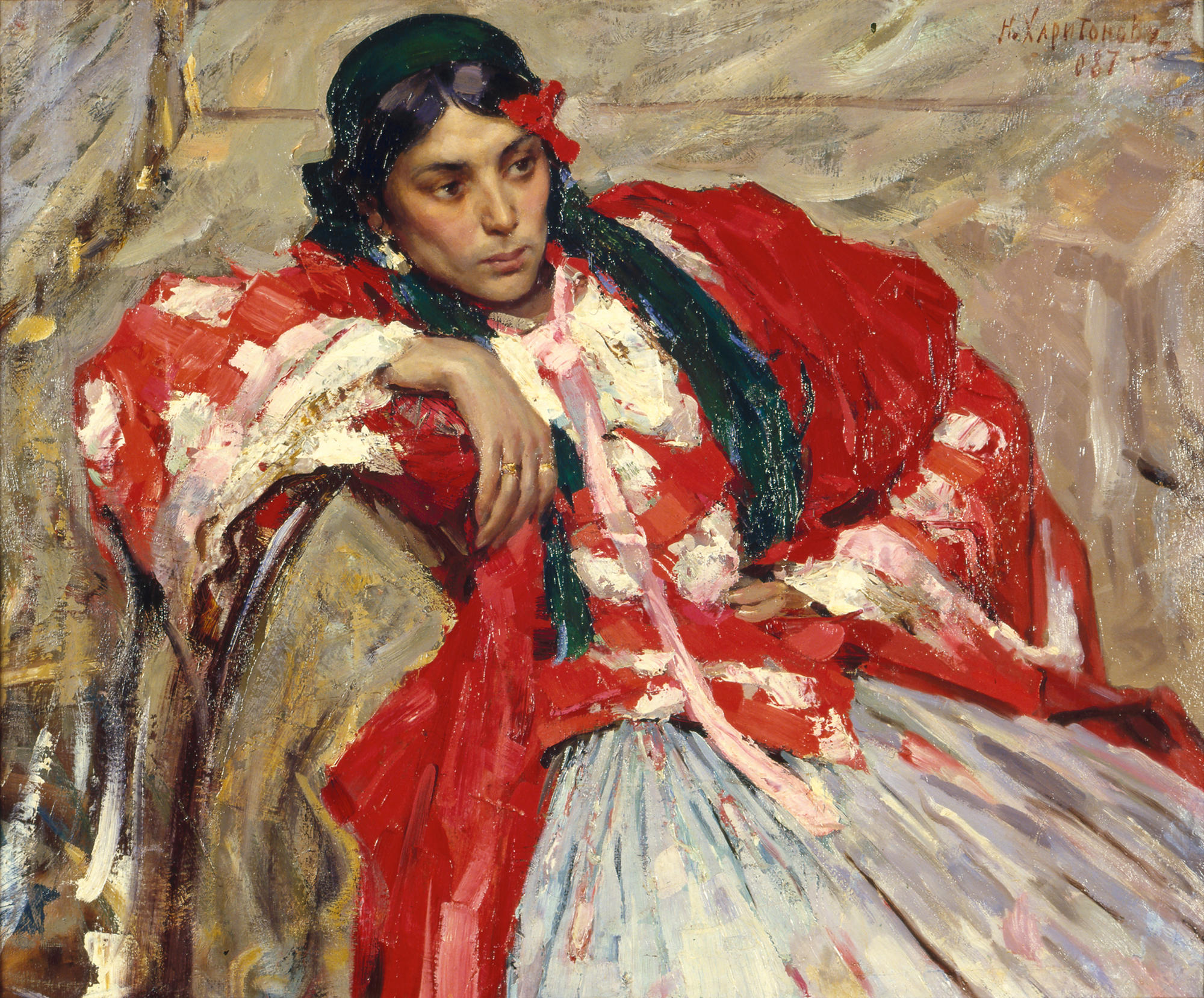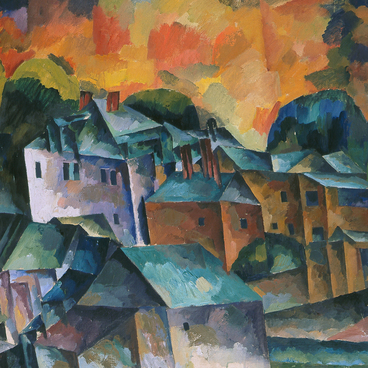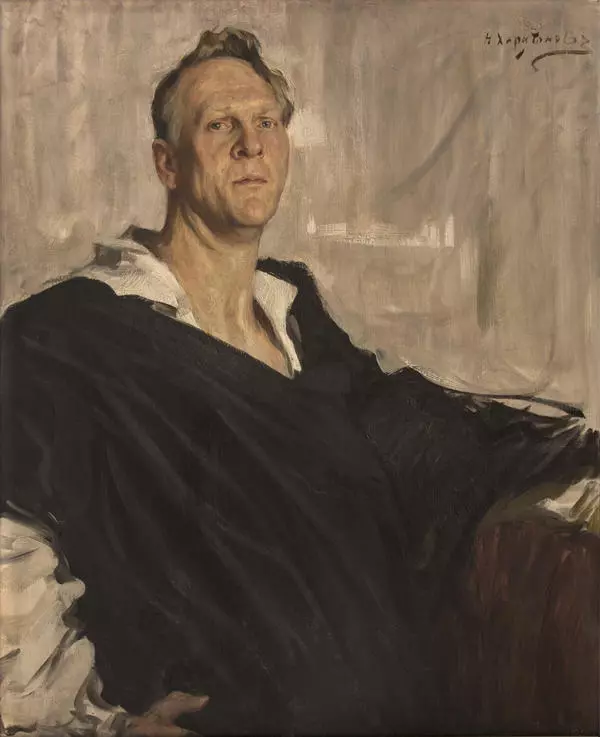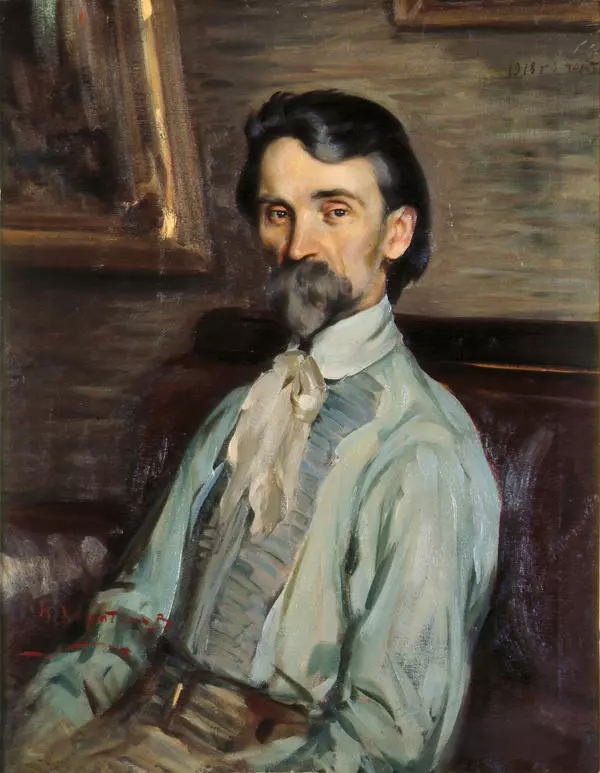Nikolay Kharitonov is a Russian artist, landscapist and portraitist, genre painter. He was born in Yaroslavl Province, and in 1892, after finishing a rural school he moved to Saint Petersburg. Then in 1895, he became a novice in Valaam monastery and started painting icons.
After returning to Saint Petersburg in 1897, Nikolay Kharitonov joined the Drawing School of the Society of Encouragement of Artists and worked as an apprentice of Lev Dmitriev-Kavkazsky, an engraver and etcher. Starting from 1901, Kharitonov became a Deferred Matriculant of the Imperial Academy of Arts and an apprentice of the famous artist Ilya Repin.
Nikolay Kharitonov received a rather early renown by the public. When he was still studying in the Academy of Arts, he sent his paintings to F.A. Kovalenko Yekaterinodar Municipal Picture Gallery to participate in exhibitions. In 1909, Kharitonov received the title of an artist, and his paintings received the Arkhip Kuindzhi Award, the Award of the Drawing School of the Society of Encouragement of Artists and the Jubilee Award of Princess Eugenia of Oldenburg.
Starting from 1912, the artist travelled across Europe; he visited London, Rome, Berlin and Vienna, worked in Paris and studied in Munich Academy of Arts. His piece Lady in Black had great success at Munich International Exhibition. Leipzig museum acquired this painting for its collection.
Nikolay Kharitonov created the portrait Gypsy Woman in 1908, when he was still a student. Fyodor Kovalenko bought this painting during the 7th Periodic Exhibition in 1909, and then sent it to the competition exhibition of the Academy of Arts at the request of the artist. Kharitonov himself valued this piece greatly. Later he even asked Fyodor Kovalenko to return the portrait, but Kovalenko insisted on it staying with the museum.
Despite the fact that Kharitonov painted the Gypsy Woman so early in his life, it may be rightly called one of the best portraits of the artist. Nikolay Kharitonov construed the image of a gypsy woman according to the Russian tradition of the 19th and early 20th centuries based on the ideas of writers and poets of romanticism and realism, who used to turn to gypsy culture, traditions and rituals.
The artist created an image of a natural, strong, artistic woman with its own inner world and life closed for the audience. The striking scenic beauty, plasticity and inherent dynamics, expressivity of the image and the profound character – these are the main features of the portrait. A young gypsy woman sitting in in armchair if full of motion and expressiveness.
Nikolay Kharitonov used the close-up to depict his model, and the young woman practically fills all the space of the painting. It is very interesting to compare the manner and the technique used by the author to paint the dress and the face. Different techniques allowed him for conveying the hot blood of the gypsy’s character and the latent life of her soul.
After returning to Saint Petersburg in 1897, Nikolay Kharitonov joined the Drawing School of the Society of Encouragement of Artists and worked as an apprentice of Lev Dmitriev-Kavkazsky, an engraver and etcher. Starting from 1901, Kharitonov became a Deferred Matriculant of the Imperial Academy of Arts and an apprentice of the famous artist Ilya Repin.
Nikolay Kharitonov received a rather early renown by the public. When he was still studying in the Academy of Arts, he sent his paintings to F.A. Kovalenko Yekaterinodar Municipal Picture Gallery to participate in exhibitions. In 1909, Kharitonov received the title of an artist, and his paintings received the Arkhip Kuindzhi Award, the Award of the Drawing School of the Society of Encouragement of Artists and the Jubilee Award of Princess Eugenia of Oldenburg.
Starting from 1912, the artist travelled across Europe; he visited London, Rome, Berlin and Vienna, worked in Paris and studied in Munich Academy of Arts. His piece Lady in Black had great success at Munich International Exhibition. Leipzig museum acquired this painting for its collection.
Nikolay Kharitonov created the portrait Gypsy Woman in 1908, when he was still a student. Fyodor Kovalenko bought this painting during the 7th Periodic Exhibition in 1909, and then sent it to the competition exhibition of the Academy of Arts at the request of the artist. Kharitonov himself valued this piece greatly. Later he even asked Fyodor Kovalenko to return the portrait, but Kovalenko insisted on it staying with the museum.
Despite the fact that Kharitonov painted the Gypsy Woman so early in his life, it may be rightly called one of the best portraits of the artist. Nikolay Kharitonov construed the image of a gypsy woman according to the Russian tradition of the 19th and early 20th centuries based on the ideas of writers and poets of romanticism and realism, who used to turn to gypsy culture, traditions and rituals.
The artist created an image of a natural, strong, artistic woman with its own inner world and life closed for the audience. The striking scenic beauty, plasticity and inherent dynamics, expressivity of the image and the profound character – these are the main features of the portrait. A young gypsy woman sitting in in armchair if full of motion and expressiveness.
Nikolay Kharitonov used the close-up to depict his model, and the young woman practically fills all the space of the painting. It is very interesting to compare the manner and the technique used by the author to paint the dress and the face. Different techniques allowed him for conveying the hot blood of the gypsy’s character and the latent life of her soul.






